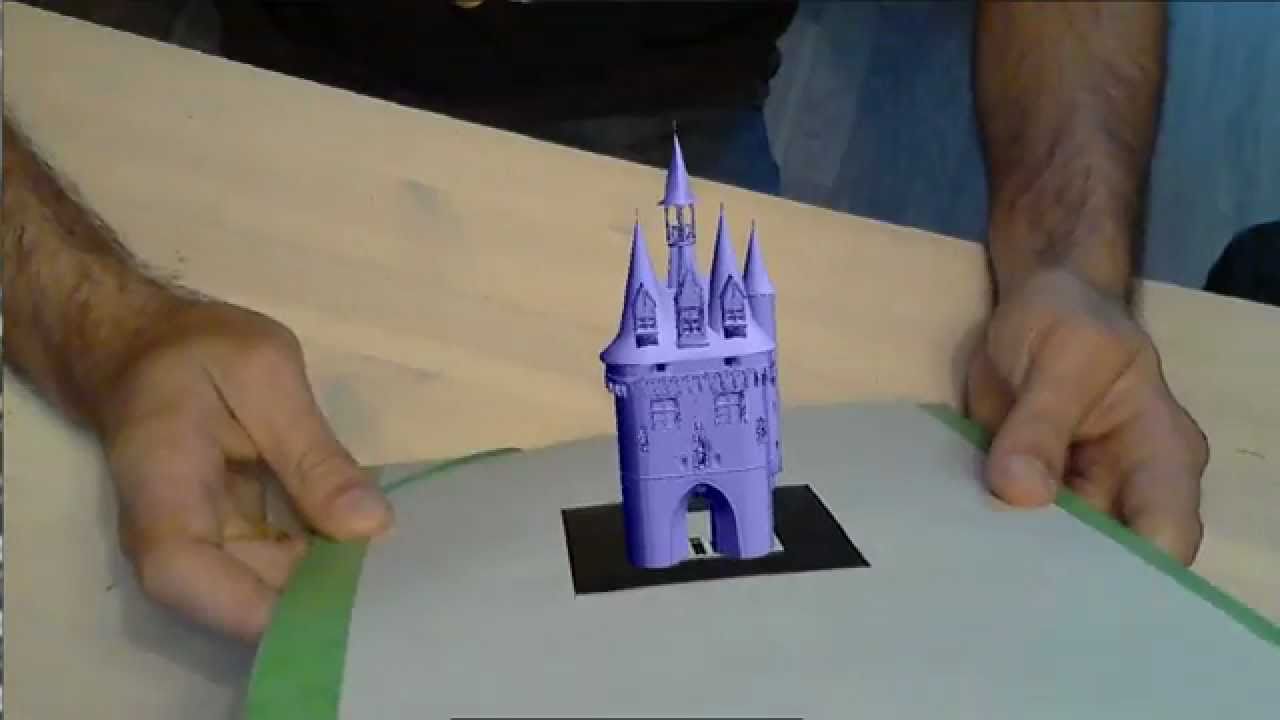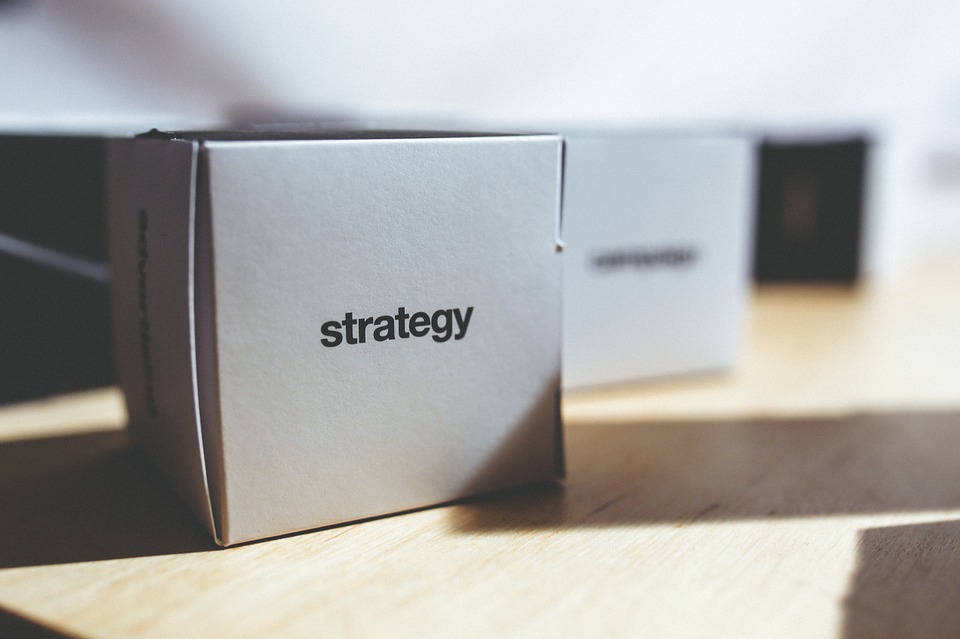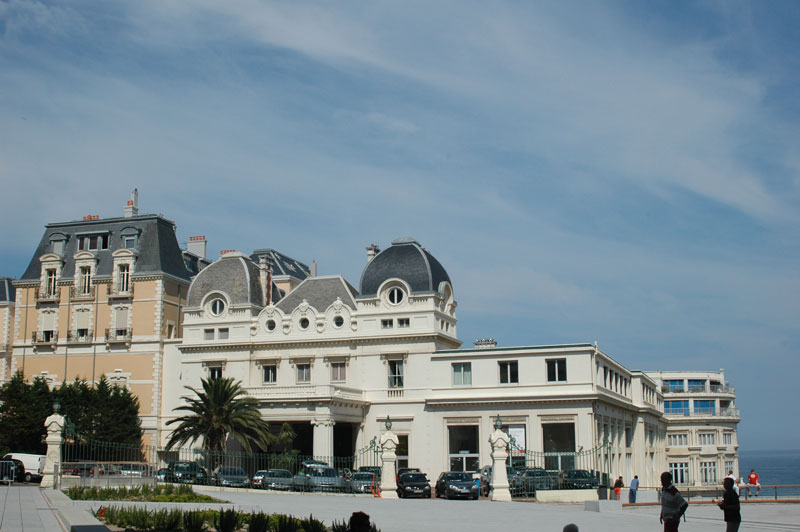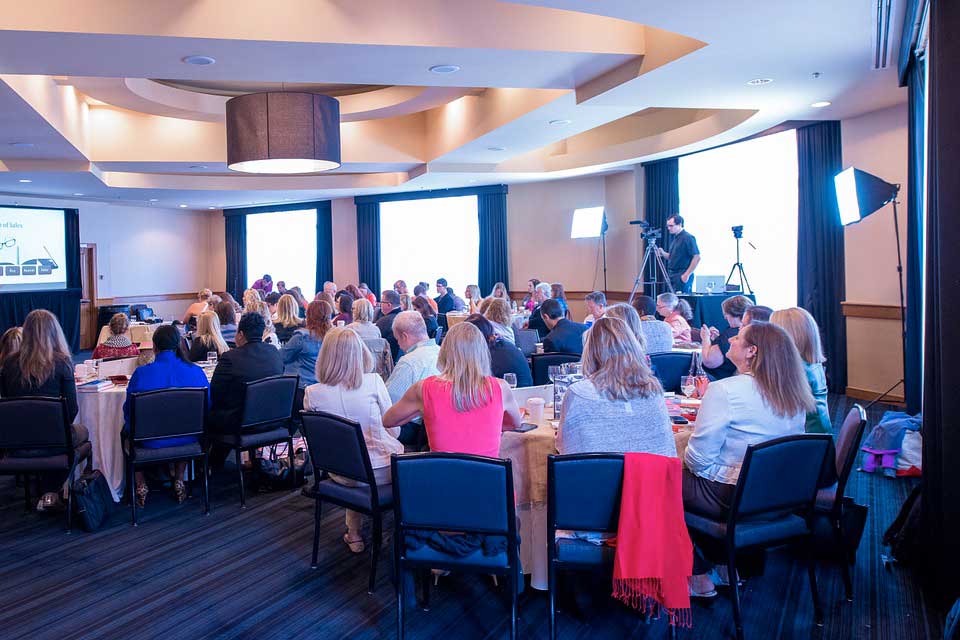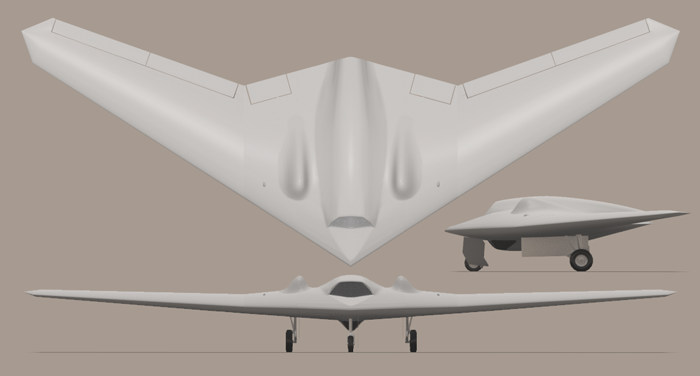Augmented reality breathes new life into advertising objects
In 2016, augmented reality is no longer an impossible dream for marketers. At the merest mention of this phenomenon, marketers' eyes light up like Christmas trees and 2D and 3D dollars bills appear before them. It is generally agreed that augmented reality will boost creativity. Revenue generated from this will rise from 500 million to 7,5 billion euros by 2020. This technology, when applied to advertising objects, opens the door to communication campaigns on a completely new scale for companies.
Virtual reality will help create more effective marketing campaigns
Augmented reality allows the insertion of a 2D or 3D element in an image. This effect increases onlooker's perception of the environment when they are looking at the image; and can also give them access to digital information. There are no limits for its utilisation and creativity in advertising and marketing sectors.
Augmented reality can be employed for event communication operations, product presentations and point of sale interactivity.
Ikea has shown the way in proposing customers an interactive catalogue. The application enables the incorporation of a piece of furniture or an object into a photo of the room, where it is to be placed. This allows the object to be envisioned before the purchase. For their part, l’Oréal has provided a mobile application that allows customers to try its latest make-up using a selfie. Satisfied by the results, customers can then immediately buy it online.
Interactive advertising objects
Finally, JCDecaux has chosen bus shelters for their display posters supporting the the release of the film “Why I did (not) eat my father”. By pressing the button under the poster, the passerby starts an animation and the film's characters appear in a larger than life photo at the bus shelter.
By using augmented reality a simple USB key or an advertising mouse pad can be turned into an interactive object. Digital data, registered on the logo can be scanned by the user's tablet or smartphone with the help of a dedicated application. The customer and his environment enter immediately into the brand's universe.
Quickly becoming indispensable in renewing a communication campaign, augmented reality valorises companies' brand images and facilitates the prospect's bond with the recommended product. The identification and the presentation create confidence and incite a will to acquire the consumer product.
Good reasons to incorporate augmented reality in advertising
If it were necessary to list the reasons to utilise augmented reality to strengthen the impact of advertising objects, they would undoubtedly be the following:
- It enables a brand to stand out from the competition with this new usage.
- It creates an interaction between product and customer, transforming the latter into one of the players.
- It provokes a swift purchase, and live demonstrations lead to a relationship of mutual trust.
- It facilitates the conversion of new customers, attracted by its effects.
The perspectives offered by augmented reality are extremely tantalising in terms of marketing. All the same, there is an entry cost that must be vindicated by real sales. There is no getting away from the figures, and its effectiveness will be sanctioned by the conversion rate and higher sales figures. Otherwise, augmented reality might well remain an impossible dream.
Other articles:
- Promotional merchandising or how to be more effective in your Marketing strategy?
- Virtual reality, the new marketing eldorado
Eight good reasons to use video in your communication
Once internet users have seen an advertising video, 43% of them have then visited the company's web site. In the era of Internet and social networks, the video format has become indispensable in making digital contents attractive and viral. Video attracts new customers, generates substantial sales and greater visibility. In a digitalised economy, your communication strategy must incorporate the video format, a lively and more memorable experience.
The following eight arguments proposed here should help you to utilise videos in your marketing strategy
1. Offer a clear and effective communication to your customers
Video establishes a dynamic communication that brings the message directly to your customers in an effective and clear manner. Your company disposes of several audiovisual techniques that intensify the relevance and potential of your marketing: storytelling, infographics or even better, virtual reality.
2. Develop your communication on social networks
The social networks are essential to your marketing strategy irrespective of your activity sector. By posting a video on YouTube, Facebook or Twitter, you cultivate your audience and your visibility. This format is a large part of the interactivity of your advertising and favours the consumer engagement. Easy to share, and a source of vitality, it is very much appreciated by internet users.
3. Improve the visibility of your communication
The use of diverse communication supports improves the referencing of your company on Internet. Video is one of the marketing tools that will win you even more visibility.
4. Video proposes an original and distinguishable communication
One advantage of video is to be found in the customer experience that it offers. Thanks to virtual reality and 3D, video permits an unprecedented company advertising that differentiates you from the competition.
5. Initiates communication with a buzz
In placing video in the centre of your marketing strategy, you can benefit from the Internet buzz more easily than other advertising supports. Video is the viral tool par excellence that is shared by “word of mouth” on social networks.
6. Video is a reusable communication tool
Your company's video can be used many times: during a conference, a fair or any B2B or B2C event, in a newsletter, on your web site and so on. It is a long-term tool.
7. Video is a professional communication tool
Video can fulfil all these promises in terms of visibility, but must be perceived and created in a professional manner. Your company will benefit by the skills of a specialised provider, such as scenario building, direction, montage, animation, voice-over, subtitles etc. All of these assets make for an optimal rendering and maximum effectiveness.
8. Improve your internal communication
Apart from your company's advertising, video can also be used for your internal communication. This easily accessible and fun media allows you to inform your collaborators, to motivate your staff and to present the annual accounts to your team.
Video helps you gain visibility on Internet. It has 50 times more of a chance to appear on a Google search, the leading search engine, than all other contents. For a relevant and effective communication strategy, videos are the essential support for your company.
2 examples: Corporate film & Products film of Margy Consultants
Other articles:
Discover cloud computing's secrets in the service of digital marketing at Cloud Week 2016
Cloud computing week will be held in Paris between 4 and 8 July 2016. After the success of the previous edition, EuroCloud, under the name of Cloud Week has once again attracted all the experts and major professional organisations of the cloud computing revolution. Making its appearance on the computing scene only a few years ago, cloud computing has shaken up corporate information systems, and in particular digital communication. Before presenting the main features of cloud week, let's take a look at cloud computing's role in small and medium-sized companies.
Cloud computing, the digital tool that energises corporate marketing
Cloud computing is a relatively recent concept, a veritable indicator of the digital transformation in small and medium-sized companies. It allows companies' marketing sectors to benefit from a colossal calculating power and information stock. Thus, companies dispose of diverse online services: professional applications, storage and calculations.
According to a survey conducted by IDC with 150 small French companies ranging from 50 to 1 000 employees, 78% of respondents stated that they use cloud computing tools in 2015. This figure will surely be 92% in 2016. This involved mainly application based management solutions, from CRM (customer relationship management), to ERM (enterprise risk management) and including HCM (human capital management). Companies have, in this manner, fully integrated the profound changes made possible by cloud computing, the global economy's digitalisation and in particular in their communication strategy.
Cloud Week in Paris, the essential marketing meeting
Cloud Week takes place in Paris from 4 to 8 July 2016. A dozen events are planned throughout the capital for this edition. Organised by EuroCloud France, this event is geared to cloud computing's ecosystem. It treats cloud's big challenges and in particular the use and valorisation of data collected at conferences, round tables, thematic workshops and professional meetings. Following the example of the first edition, the organisers hope to gather more than 4,000 managers from small and medium-sized companies, as well as attracting 5,000 visitors to fully embrace a European dimension.
Among this week's many events, Monday's visionary conference will reunite personalities from various universes, who will outline their opinions on the digital's future. The trophy evening will include the awarding of five recompenses which will give the prize-winners access to the European EuroCloud award. On Tuesday the Paris Chamber of Commerce will lead a conference on the reasons why cloud computing has become a reality for companies. Numerous experts from the sector will evoke the blockchain and its ambitions. The CDRT (Club des Dirigeants Réseaux et Telecoms) will organise a morning devoted to unified communications using cloud computing. Wednesday will be consecrated to États Généraux d'EuroCloud France with presentations by several big IT service companies. On Thursday the conference on “Applied marketing with SaaS, towards a new paradigm” will be held.
Cloud Week at the beginning of July will be the gathering point for all the French and European players of cloud computing. By favouring professional exchanges and meetings, Cloud Week contributes to the awareness of small and large companies to this new competitive factor.
Other articles :
- Digital marketing’s corporate place in 2016
- How to integrate digital transformation within a business?
Caring for the company image thanks to its visual identity
A company's visual identity is the sum of its representative graphic elements. It is exemplified by a blend of forms, colours, typographic elements, symbols and so on. The objective is that each company creates its own image by which it can be instantly recognised. Does this really have an impact on the company? Should the image be renewed over time?
What is the importance of visual identity for a company?
Establishing the first contact between a company and a prospect
A company identity should set the tone. Constituting the first contact between a prospect and a company, the identity must be easily recognisable and attractive to potential customers. A logo that is too complicated to understand can have negative repercussions on target groups. The font, colours, graphics, all these elements must be carefully selected to be able to convey the image the company wishes. If the branding succeeds in attracting the prospect, the last-named might continue to the next step, to place an order or to request an estimate.
Conveying the company's values
A company's goal is to transmit a message and its values. This is done through its communication and inevitably its visual identity . In effect, this identity must be unique, resemble the mirror image of the company and convey those values which it wants to defend. Using its identity, the company can transmit certain messages subconsciously and position itself in a precise sector, or reach a specific target (young people, well off consumers, individuals, professionals etc).
Distinguish yourself from the competition
An identity also enables a company to stand out from the competition. Companies that evolve in a competitive sector must be able to differentiate themselves thanks to a singular identity. It's the right time to use creativity and to make an impact. With a Monty Pythonesque or similar out of sync visual identity, the company will have more of a chance to arouse curiosity and to have a head start over its competitors. An attractive logo, an original typography, colours which harmonise with its values, all these are key assets that attract potential customers.
Should the company develop its identity over time?
The question of developing or changing a company's visual identity is often raised. Should a logo be modified? Will the company lose customers if it makes a change? These are questions that all companies and businesses quite correctly ask themselves. It is, though, indispensable for a company to develop its graphic identity over the years. A striking identity in the 90's will not be as effective in 2016 in this era of rapid graphic and typographic development. Changing identity, however, does not mean changing values or the message that the company wishes to convey. It is possible to keep the strong elements (colours, symbols etc), and to update them in a more contemporary and studied approach to graphics.
Other articles:
- Branding: the company’s marketing window
- Graphic designer: creating effective and personalised communication with a palette of colours and ideas
The CCFI awards Cadrat d'Or prizes to three printing houses
On the occasion of the 60th edition, the Cadrat d’Or prize was attributed to 3 printing houses for their proposed works. Two of these tied for first place: La Manufacture d'Histoires Deux-Ponts and Technic-Plus-Impression (TPI). A third “jury prize” was exceptionally awarded also.
What is the Cadrat d’Or?
The Cadrat d’Or is a prize recompensing the most innovative and creative French printing firms. The participants must present 2 or 3 production works, which have already been proposed to customers, accompanied by a registration form. A jury then has the job of attributing the awards to the best French printing houses . This jury is principally composed of the president Véronique Pivat and the president of the CCFI, Pascal Lenoir. For this 60th prize, no less than 24 subscriptions were received by the jury. The results were announced on 19 May at the Ecole Militaire de Paris. The CCFI recompensed 3 printing houses, of which two were tied for first place , and a third was distinguished with a special “jury prize” .
Who were the winners of the 3 Cadrat d’Or prizes?
Cadrat d’Or for creativity and innovation within the printing sector
This year's prizewinner was La Manufacture d'Histoires Deux-Ponts . Established at Bresson, not far from Grenoble, this printing firm was attributed the award for the quality and creativity of the works presented. Having taken home the prize in 2008, it is the second time that this printing house has been awarded a Cadrat d’Or for its accomplishments.
Le Cadrat d’Or for creativity and innovation in communication
For its first participation, the Technic-Plus-Impression (TPI) printing house, located at Betton close to Rennes, finished in tied first place. It won the Cadrat d’Or for creativity and innovation in communication services. The prize is a sign of the firm's quality and excellence.
The Cadrat d’Or jury's “Digital prize”
Already a Cardrat d'Or prizewinner in 2010, the digital printing house E-Center in Malakoff (near Paris) received the jury's “Digital prize” for its accomplishments this year also. An award which will encourage this pioneering printing firm, and enable it to continue its work with the new technologies.
A prestigious event held in the presence of industry personalities
The 60th edition of this award was held in the presence of nearly 230 personalities from the graphic and art world, including companions of the CCFI, and without forgetting the representatives of the Ministry of the Economy, Industry and Digital Economy. Of the last-named, Benjamin Leperchey, assistant director of the Health Department and Consumer Goods, spoke about French know-how and the quality of the presented works. He congratulated the participants for their adaptability in a sector of constant development.
Other articles:
- The Cadrat d’or is the most prestigious French printing prize
- DRUPA 2016 : this year’s edition focuses on the technologies in the printing sector
Effective customer relations are based upon confidence
To win customer loyalty today, it is increasingly important to establish genuine confidence in customer relations. Naturally, gaining confidence is a long-term process, and it remains fragile and can be lost extremely quickly. Confidence, however, enables companies and businesses to transform simple consumers into genuinely involved customers, who can defend your products in the best case scenario. A few tips here may help you to build durable customer relations.
Customer knowledge is essential in winning their loyalty
Collecting consumer data is getting easier and easier. In today's business climate, any company worth its salt should possess a documented customer base.
The more complex it is, the more effective it will be, facilitating the sending of genuinely personalised messages about your products to targeted customers. A straightforward birthday message or a promotion on recurring purchases, albeit without being of great originality, are simple methods that prove your loyalty to your regular customers. They illustrate the fact that your company remains close to its customers and that they are not just numbers on an over-sized list. Attention, all the same, with customer data management: According to a Verint study, carried out in partnership with Ovum and Opinium, 30% of the French do not have confidence in companies' data security. Don't hesitate to explain the reasons for collecting certain information, thereby reassuring consumers, and don't go beyond what you have committed to. A reassured customer is a confident customer.
Customers are on internet and everywhere
Your customers are not only those that visit your internet site.
They are also present on the social networks. Therefore, it is also important to join them on these channels, as good customer relations aren't just limited to the actual buying moment.
To establish a feeling of proximity, it is not just about being present, but also by communicating with consumers. By simply answering messages, whether they be critical, positive or uncomplicated questions is proof enough for customers that your company takes an interest in them.
This practice also allows you to gain a better understanding of customer prospects or expectations, and to adapt, when appropriate, your proposals to their needs. In a close relationship, it is also usual to display an interest in local practices and events. This applies to small companies as well as to multinationals (certain fast food brands propose regional products according to the country the chain is established in).
Why is the confidence of your customers so important for you?
A confident customer gets involved and feels affected by the brand. This is also the type of customer who expresses loyalty. When a dependable relationship is established between a company and an individual, the last-named has a clear tendency to return for further purchases.
Confidence cannot be established by just a continual presence on internet, but can be helped by readily displayed pricing policies, respecting delivery dates and so on. It is not just a one-way feeling: a company or business can also express its confidence in customers, for example, by accepting returns without justification. The relationship transcends therefore into a win-win situation and both parties benefit.
Other articles:
- The four fundamental challenges of conversation marketing
- Web communication in companies: the challenges of successful programmatic advertising
Five strategic diversification axes for printing houses
Faced with a depressed economic climate, the commercial printing sector is increasingly looking to reinvent itself by diversifying its activities. The last several years, printers have suffered a drop in demand at professional and individual level and by consequence, a heightened competition. As a result, printers must diversify from traditional printing to expand their markets by imagining new strategic directions to develop their business.
Printing large format
The visual communication market is in a period of significant expansion and represents an axis of diversification from printing. Thanks to digital printing, the large-format is accessible to printers by means of the acquisition of less expensive equipment. To conquer these new markets, printers must also develop delivery services (as in the event sector), label applicators (notably for distribution) and even connected screens.
Client interface web-to-print
With the aid of web2print, printers can set up an internet site which offers customers the possibility of ordering printed documents online (B2C), or for professionals to conduct a collaborative management of their prints (B2B). Web-to-print solutions enable printers to renew customer relations and win over a new clientele attracted by printing in an expanding customer catchment area. This improves the communication flow between printer and customer, and simplifies the buying act as well as optimising the utilisation of the production tool.
The creation of internet sites
The growth of web sites, at the centre of a customer loyalty strategy, represents a complementary service for printers. Promoting customer satisfaction, the printer therefore proposes a global communication solution: from graphic creation, to printing and to the web, by way of guidance. By offering a large range of services, this positioning offers the opportunity of strengthening the client relationship, while also increasing orders.
The adhesive
With the development of the digital rotary press, the adhesive sector has become available for traditional printeries wishing to diversify their activities. Undergoing a period of significant growth, the adhesive label market, is a perfect complement to print, and has proven itself to be quickly profitable despite necessary investments. Predicted a flourishing future, adhesives have become accessible due to technological innovations brought about by digital rotaries, which enable them to increase their productivity.
Electronic printing
Printing on industrial supports, such as NFC or RFID tags, OLED lighting, biomedical sensors, batteries, printing circuits, represents an implied diversification, to the extent where it imagines the management of the customer's own workshop. Nonetheless, proposing printing and a segment of intelligent paper (or communicating paper) opens genuine market growth opportunities with significant value added; and all of this is linked to electronic printing's changing technologies.
The advent of digital usage has, on the one hand, fragilised the printing sector by creating competition. Paradoxically, however, this has also assured a higher quality product, thereby stimulating productivity and competitivity, as well as diversifying the range of products. Hence, printeries, faced with their profession's financial crisis, dispose of real opportunities to bounce back, conquer new markets and reassert the value of printing.
Other articles:
iMédia Brand Summit 2016: zoom on digital marketing
With the multiplication of online commerce and a fully digital environment, the question of digital marketing is taking an increasingly more important place. The almost obligatory online presence of companies has increased the need to adapt their communication by utilising e-marketing . In this respect, the annual encounter at the digital marketing iMédia Brand Summit (formerly Digital Marketing One to One) anticipates the gathering of digital communication experts. We focus on this much awaited rendezvous of companies and marketing professionals.
The challenges of digital marketing for the corporate world
The annual conference on digital marketing will be held on 1 and 2 June 2016, in Biarritz. These business meetings will reunite no less than 500 e-marketing specialists . The programme will consist of several organised round tables and not less than 800 business meetings between service providers and decision makers. The objective is to draw up a report on the situation and the importance of digital marketing at national and global levels. The Summit's goal is also to find long-term solutions in the fields of digital communication and customer management.
5 plenary conferences at this marketing summit
Keynote "Surf the digital company wave of 2030"
Opening the summit, the speaker and digital economy personality, Joël De Rosnay, will introduce the organisations that will be leading the way towards 2030. With the growing trend towards full digital, he will broach the corporate future in the digital universe, and the notion of “connected consumers”.
Zoom on the Data Management Platform
From 6:15 pm to 7:15 pm on 1 June, communication experts will take the floor to expound on the Data Management Platform situation and its future in the digital marketing sector. Different speakers will succeed each other to shed light on these audience management platforms and their popularity with online traders.
Customer Experience Conference
On 2 June, from 9 am to 10 am, a conference on the professionals of Customer Experience will be held featuring different specialists and marketing department heads from the big groups. This intervention will highlight the customer experience, its supporters and defenders. Who are they? What is their strategy?
David Shing's intervention
From 12:15 to 1:15 pm on 2 June, David Shing, Digital Prophet – AOL will evoke creativity's place in advertising. Have disruptive technologies and programmatic once and for all stolen the show in the advertising world?
Round table on crowd marketing
Finally, on 2 June, from 6 pm to 7 pm, a round table on crowd marketing is scheduled. What place is there for customer opinions in brand communication? Will it be necessary to limit crowd marketing in the years to come? On the contrary, do companies have to associate themselves with consumers to better promote their businesses? These and many other such issues will be taken up.
Other articles:
- Digital marketing’s corporate place in 2016
- Web communication in companies: the challenges of successful programmatic advertising
Digital marketing's corporate place in 2016
Rather than reading tea leaves, professionals prefer to exchange their experience at digital marketing conferences organised by Viuz. These exchanges enable professionals to envision sector trends for the coming years.
Firstly, the basic trend: Digital advertising dominates the sector and has supplanted television advertising. Marketers count on a progression of 8,1% of on-line advertising compared to +0,3% for the total global media market.
Virtual reality is no longer a distant hope
In the light of the above, Thomas Husson, analyst at Forrester, draws attention to several scenarios. Virtual reality usage will augment significantly. In 2016, it is estimated that 1 million headsets will be used in the USA. In 2020, this figure will reach 50 million, of which 20 million in the corporate world. The areas most concerned by its use will be those pertaining to luxury tourism and the automobile industry.
The mobile: omnipresent and unassailable in 2016
Another major trend: the mobile has superceded the PC and is increasingly more present in our private lives. The “mobile first” adage is on the way to being updated by the “mobile only”, and is now at the centre of the galaxy of connected objects (IOT). The figures speak for themselves about its omnipresence. In 2015, 78% of Facebook's advertising revenue was realised on the mobile, 51% of time spent on the Internet was via our telephones and 50% of Google's 100 billion researches were made with the mobile. Our smartphone, this little all-knowing and time-consuming monster, is everywhere and encroaches upon our free time and our leisure activities.
2016: video will answer for 75% of web traffic
Since 2011, video usage has continued to grow. Every day, there are 8 billion views on Facebook or Snapchat, and on average an internet user watches 40 minutes of videos per session. To cope with this supremacy, Google has launched You Tube Kids and You Tube Gaming. The objective of this move is to allow advertisers to detect the interests of targeted groups to make better use of digital advertising. It will be up to professionals to determine and develop the right video format, even if the “short time” seems to be preferred.
Digital advertising's personalisation
The last major analysis reveals the necessity to produce a more personalised form of digital marketing. At l'Oréal, Laurent Laforest reminds us that, in their sector, communication functions are transmitted by means of influencers. This barbaric term is a reference to bloggers and social networks.
Blogs have become more and more specialised and an incontestable intermediary in the luxury and make-up industries. This power of influence requires a genuine objectivity from the blogger and product promotion must be clearly framed by these sponsored articles.
The social networks are more often used by those in the 16-34 age group, who refer to them for the merest information search. For the over 50's the search engine takes over again.
As in the case of Soosh or Parisien, marketers must come up with campaigns linked to internet users' habits. Targeted contents and subscription propositions based on collected data lead to a better conversion rate.
Marketing's harsh reality: do as I say…
All the same, once all the trends have been analysed, tested and applied, the reality of the figures must still be taken into account. In the corporate world, the gap between consumer habits and marketing practices is still a long way from being breached.
In 2015, only 7% of companies that responded to the Baromètre Idaos on digital transformation invested in the new technologies and modified their communication methods. Let's wait and see, perhaps digital marketing trends in 2016 will reflect the awareness that Internet has become reality.
Other articles:
- Advertising objects have a role to play in marketing
- Eye tracking or how customers’ subconscious can dictate a company’s marketing policy!
Additive Manufacturing Europe, the first European 3D printing fair!
The successor to the 3D Printshow
The Additive Manufacturing Europe trade fair is the successor to the renowned 3D Printshow, of which the third and last edition was held in Paris on the 16 and 17 October last year. The organiser, the Tarsus group, has chosen to give the fair a new direction, and to regroup the London, Madrid and Berlin fairs on the same site in Amsterdam in Holland. This B2B trade fair of additive manufacturing principally targets the health sector and the automobile, aerospace and prototype industries. As it is held in Europe, the fair will propose a range of languages making it accessible for everyone.
A fair dedicated to additive manufacturing
From 28 to 30 June, professionals of additive manufacturing will be present at the RAI halls in Amsterdam. This technology has continued to expand enormously in 2016. Many projects have seen the light of day and professionals are investing significantly in research and development on all levels: software, 3D printing technologies and tools.
Additive printing is creating a veritable revolution for many manufacturing procedures. This is also the case for the automobile industry, where 3D printing has enabled the rapid realisation and testing of prototypes.
In the health sector, we have seen the advent of new prosthesis, which have already helped many patients, and recently 3D printing technology enabled ISS astronauts to remotely print an adjustable spanner that they lacked.
Additive Manufacturing Europe 2016 proposes a space consecrated to these fast-growing activities featuring the latest innovations. Unfortunately, the fair is only open to professionals.
The exhibitors
This major European fair will attract many big industry names such as BigRep, envisionTEC, Formlabs, Höganäs, SLM, Smit Röntgen (Philips), Ultimaker, Trumpf and UL. An important meeting and exchange place, the fair will be the occasion for many professionals to demonstrate their know-how. You will also find printing material suppliers, manufacturers of 3D printers, suppliers of solutions and software, together with examples of their achievements. A very good reason for engineers, designers and manufacturers to come and find inspiration!
Conferences and training
A conference will be dedicated, during the entire fair, to the latest trends and technologies. Here, industry experts will focus on the future challenges of additive manufacturing and review certain related practical case studies.
The UL company also proposes a succession of three workshops each day throughout the fair. The first one will be dedicated to the basic principles of additive manufacturing and the next to design strategies. The third and last daily workshop will concentrate on quality and security management. This will be a very good occasion to perfect your knowledge of additive manufacturing!!
The fair will also feature a product stage, which will be open to all registered visitors and exhibitors. Here, companies will have the opportunity to present their products and technologies as well as case studies. The stage will be a perfect place for visitors to exchange, reflect and pose all manner of questions.
For more information
Interested in attending? You can find all the practical information on the fair's site.
Other articles:

